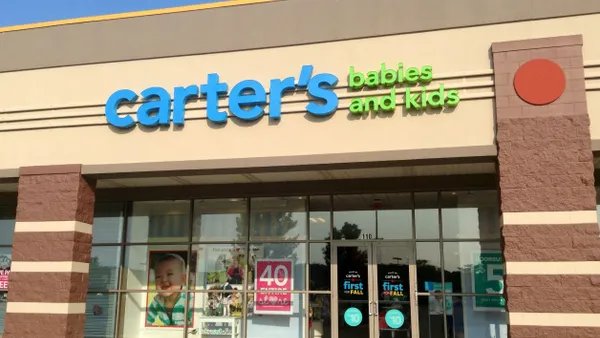Dive Brief:
-
Bed Bath & Beyond on Thursday announced it will cut about 500 jobs, or about 10% of its corporate workforce, as part of a restructuring plan.
-
The home goods retailer said the restructuring program, starting with this staff reduction, should reduce annual selling, general and administrative expenses by about $85 million, according to a company announcement.
-
Bed Bath & Beyond said it expects to incur net pre-tax charges of about $26 million during its fourth quarter, primarily for paying out severance and related costs.
Dive Insight:
The extensive job cuts announced Thursday will allow the company to reset its cost structure, "allowing us to re-invest where it matters most to our customers, to re-establish our authority in the Home space," CEO Mark Tritton said in a statement on the news.
Tritton, who stepped into the role in November, has moved swiftly in making changes to the business. Just over a month into the job, he cut six senior-level executives from the company, including the chief merchandising officer, chief marketing officer and chief digital officer. Then in January, the company entered into a sale-leaseback agreement with private equity firm Oak Street Real Estate Capital for about 2.1 million square feet of its real estate portfolio, which is anticipated to bring in more than $250 million. And last week, Bed Bath & Beyond sold off one of its non-core banners, PersonalizationMall.com, to 1-800-Flowers.com for $252 million in cash.
But moving swiftly is critical, as the company doesn't have much time to execute a turnaround effort, according to GlobalData Retail Managing Director Neil Saunders. The company earlier this month warned investors of another disappointing quarter to come.
In preliminary quarterly results, Bed Bath & Beyond said comparable sales were down some 5.4% in December and January due to store traffic declines and inventory management problems, and comps from stores alone fell nearly 11% during the period. And while Tritton last week laid out a $1 billion capital allocation strategy, which includes significant investments into stores and repaying of its debt, the job cuts may buy Bed Bath & Beyond some extra breathing room in its turnaround efforts.
"Mark Tritton has already made it clear that he wants to spend money on improving stores and the proposition, however, to do that in a sustainable way he needs to make cuts elsewhere," Saunders told Retail Dive in an email.
The company isn't in "the most robust financial positions," he added, citing that in the nine months to the end of November, Bed Bath & Beyond's operating loss stood at $618.9 million "Clearly that needs to be addressed and remedied, especially as it is also sitting on a huge $1.49 billon long term debt pile," Saunders said. "Making some cuts will help to start balance the books."
But this isn't Tritton's first retail transformation. The former chief merchant at Target helped to build a sustainable retail model that ensured long-term relevancy among consumers and profitability growth. He also revamped a number of the mass merchant's private labels and oversaw the launch of more than 30 brands.
And fortunately for Bed Bath & Beyond, Saunders said, it's in a growing segment of the market. "Homewares is an area of interest for consumers and is generating good overall growth. This helps Bed Bath & Beyond and will give it more breathing space than if it was in a category like apparel," he added.














